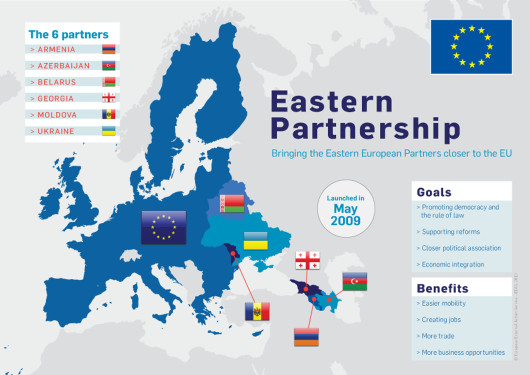 Syuzanna Vasilyan (left) is a IEE-ULB affiliated researcher in Political Science (International Relations) at the ULB. Alena Viera is a Professor of Political Science and International Relations at the Universidade do Minho, Portugal.
Syuzanna Vasilyan (left) is a IEE-ULB affiliated researcher in Political Science (International Relations) at the ULB. Alena Viera is a Professor of Political Science and International Relations at the Universidade do Minho, Portugal.
After announcing the decision not to pre-sign the Association Agreement and the Deep and Comprehensive Free Trade Area with the EU in 2013 Armenia entered the Eurasian Customs Union and Eurasian Economic Union in 2015.
Respecting the partner’s will, the EU resumed new talks over a Comprehensive and Enhanced Partnership Agreement to Armenia, which is currently pending ratification by EU member states.
While Belarus has been in a Union State with Russia and a founding member state of the Eurasian Customs Union since 2000, the EU had adopted restrictive measures against Belarus starting from 2004. These were lifted in 2016, although the arms embargo and the sanctions were retained.
Split by conditionalities?
IEE-ULB affiliate researcher, Syuzanna Vasilyan, along with University of Minho’s Alena Viera, set out to answer some questions about the EU-Russia-Armenia-Belarus relationship.
What kind of conditions did the EU and Russia extend to Armenia and Belarus? To what degree did the two countries abide by these conditions? How can different degrees of ‘integration with’ the EU and Russia in political, economic, including energy, technical and security spheres be explained?
Between the EU and Russia
In their new paper “Armenia and Belarus: Caught between the EU’s and Russia’s Conditionalities?” published by the journal European Politics and Society, Vieira and Vasilyan’s findings show:
- that both Armenia and Belarus have had split Europhile and Russophile identities, have been in a military alliance with Russia, have depended both on the EU and Russia for economic and technical assistance. Yet, Armenia has pursued a political dialogue with the EU carrying out reforms, while the relations with Belarus have been limited due to the authoritarian nature of the regime.
- Rather than being passive recipients, Armenia and Belarus have been able to influence the shape and content of the EU’s and Russia’s conditionalities, although in a different way and to a different extent.
Abstract
This article looks into Armenia’s and Belarus’ engagement with the European Union’s (EU) and Russia’s conditionalities, the two EU Eastern Partnership (EaP) countries that are also members of the Russia-led Eurasian Economic Union (EAEU). While paying attention to political, economic (including energy and technical) as well as security dimensions of the EU’s and Russia’s approaches, as proposed in the present special section, the article demonstrates that the conditionalities extended by the EU and Russia to the two countries in question have differed. In their turn, Armenia and Belarus have reacted differently to Russia’s and the EU’s conditionalities. Against the backdrop of the changing significance ascribed to both the EU’s and Russia’s policies towards their common neighbourhood since the 1990s, the present contribution identifies and analyses factors that account for the diverging positions of Armenia and Belarus, including the type of regime, the geopolitical considerations, the stakes in the economic and energy spheres and the predisposition to integration. The article shows that in the resulting complex context, Armenia and Belarus have been able to influence the shape and content of the EU’s and Russia’s conditionalities, although in a different way and to a different extent.
To see the full text, please click here.
Interested in the EU’s neighbourhood and foreign policies?
Are you a professional looking to deepen your knowledge of EU politics? Our executive programmes might be the answer.




